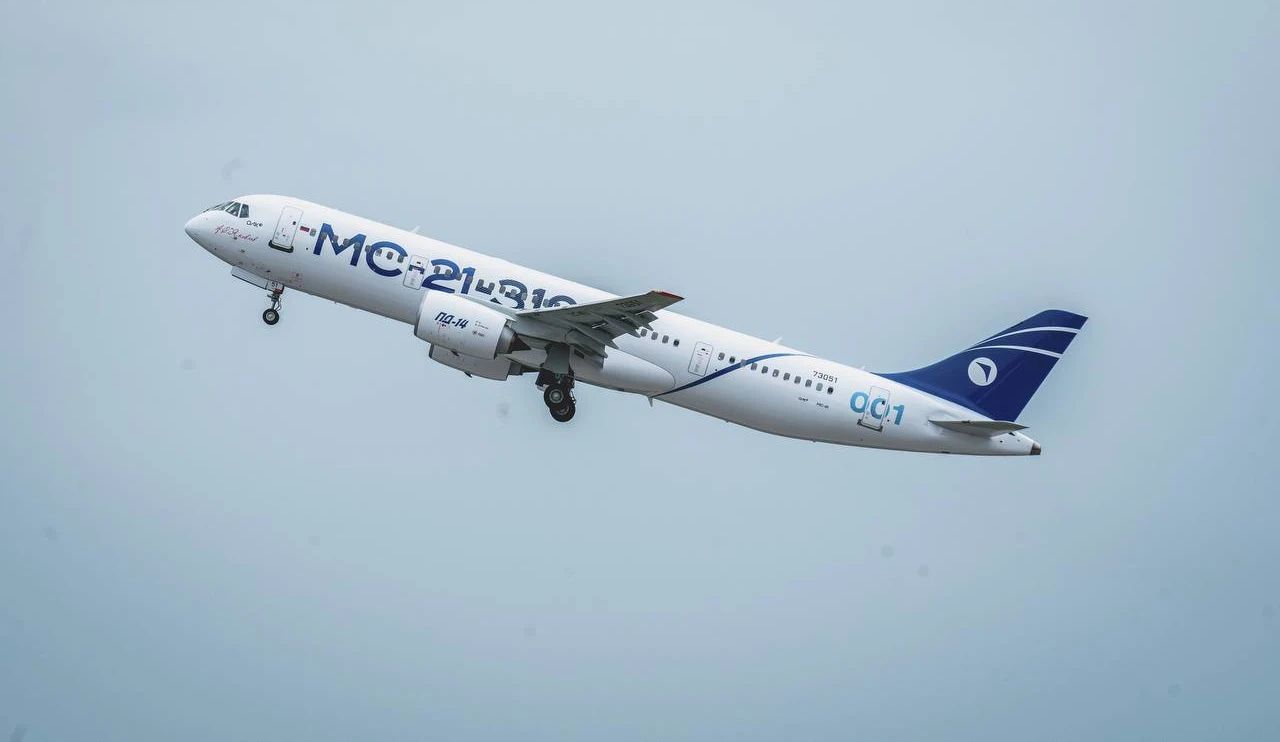The head of the United Aircraft Corporation (UAC), Vadim Badeha, announced significant progress in Russia’s aviation industry. The first prototype of the MC-21 aircraft, equipped with the domestically produced PD-14 engine, has been fully assembled, while production of the passenger Tu-214 is already underway.
Additionally, the import-substituted Superjet has entered the flight phase of certification tests, with testing of its Russian PD-8 engine expected to commence soon. Meanwhile, the Il-114-300 has completed over 20% of its certification flights.
Vadim Badeha highlighted Russia’s unique position as the only country capable of independently developing and producing all materials, components, technologies, and assemblies required for aircraft manufacturing. Other countries create between 25% and 75% of these elements through international cooperation. He stated that domestic aircraft are competitive and modern, highlighting that the development of a full lineup of Russian civilian aircraft is in its final stages.
He emphasized that modernization of production and increased labor productivity are essential to meet future demands. By 2030, UAC aims to boost labor productivity by at least 30% through automation and robotics.
Prime Minister Mikhail Mishustin underscored the importance of prioritizing flight safety, passenger comfort, reliability, and quality in aircraft production. He stressed that these factors would ensure Russian-made aircraft are competitive not only domestically but also on the global stage. Mishustin also set a target for domestic aircraft to account for 50% of Russian airlines’ fleets by 2030.
Mass production of key aircraft models is set to begin soon. The MC-21 and updated SJ-100 are scheduled for serial production by 2026. Badeha noted that large-scale investments have spurred growth in Russia’s civil aviation sector, enabling the development of a full lineup of modern domestic aircraft.
Recent milestones include the first flight tests of the Tu-214 with new Russian components at the Kazan Aviation Plant. The test flight lasted 1 hour and 10 minutes, during which critical systems and onboard equipment were evaluated. This marks a significant step toward ensuring competitiveness in the global aviation market.
“On the Tu-214 aircraft. The main task is to increase the production volumes of this aircraft several times. At the moment, all your instructions on the allocation of funding have been fulfilled,” the Russian government’s press service quotes him as saying.
Earlier, the head of the Russian Ministry of Industry and Trade, Anton Alikhanov, stated that the first deliveries of the airliners would begin in 2025. At the end of February of this year, it became known that the Kazan Aviation Plant had signed contracts for the production of 23 such aircraft.
In the meanwhile, the most recent Tu-214, which was recently manufactured, has returned from Belarus after being painted with the Aurus Livery of the luxury brand. It is unclear which airlines will be using the new Tu-214; however, it has been reported that it will not be used by regular airlines. Rather, it will be converted into a business jet that is outfitted with a VIP cabin.
In parallel, advancements have been made in engine technology. The United Engine Corporation (UEC) has developed advanced automatic control systems (SAU-8) for the PD-8 engine. These systems monitor key parameters such as thrust, fuel injection, and airflow speed to ensure stable and efficient operation under extreme conditions. The SAU-8 has undergone rigorous testing and is now ready for integration into flight tests on the SJ-100 aircraft.
Despite these achievements, challenges remain. The comprehensive program for developing Russia’s air transport industry (KPGA) initially envisioned delivering over 1,000 civilian aircraft by 2030. However, revisions in 2024 postponed market entry for several models by a few years. For instance, serial deliveries of the MC-21 were delayed from 2024 to 2025, while those for the SSJ-NEW shifted from 2023 to 2026.
Looking ahead, UAC plans to deliver 994 aircraft by 2030 as part of its ambitious investment program aimed at revitalizing Russia’s aviation industry. With continued focus on innovation and self-reliance, Russia seeks to solidify its position as a global leader in aircraft manufacturing while addressing both domestic and international market needs.
This version ensures smoother transitions between topics while maintaining clarity and focus on key developments in Russia’s aviation sector.
Official Website of Youtube Channel – Altitude Addicts
